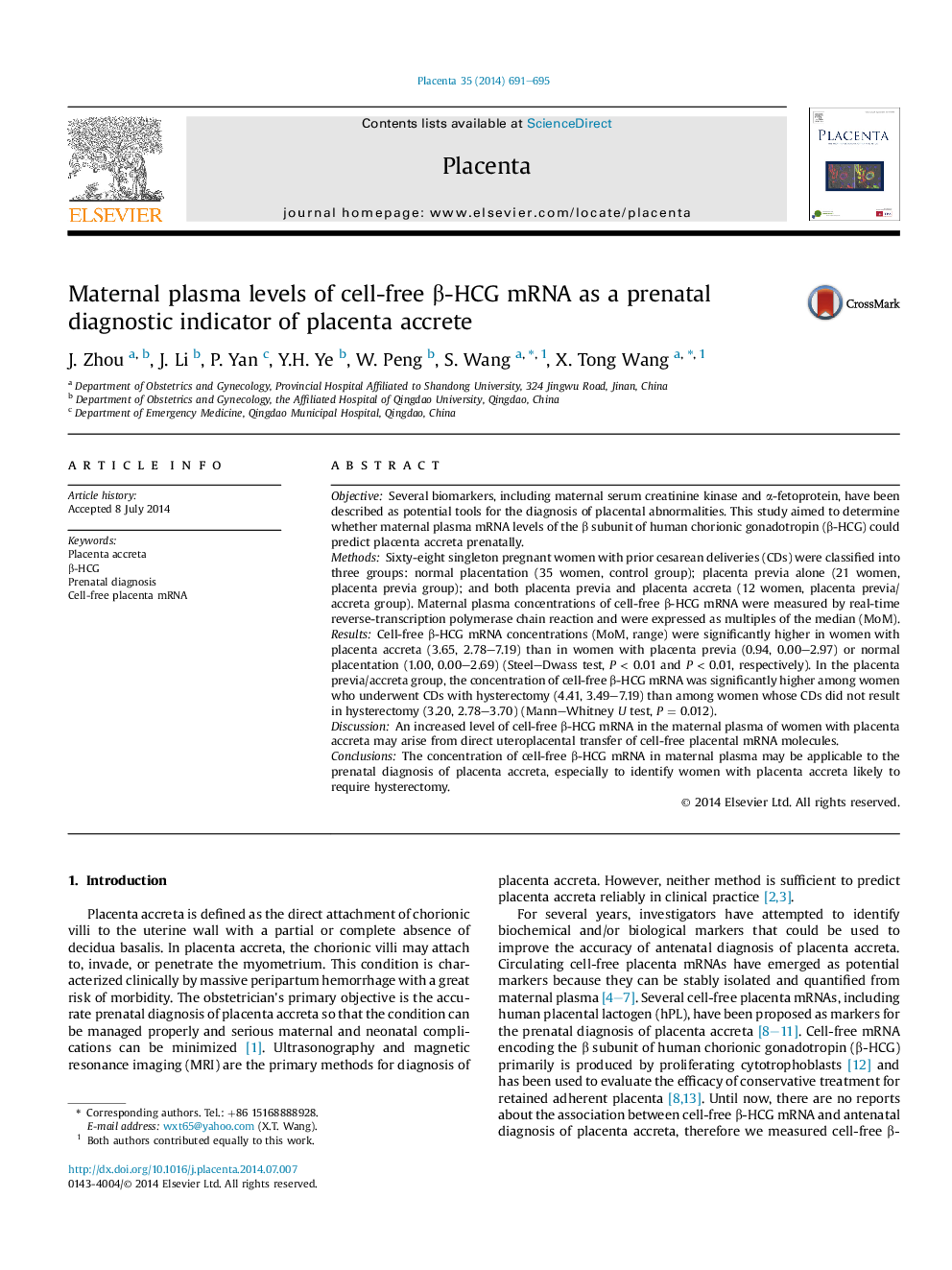| Article ID | Journal | Published Year | Pages | File Type |
|---|---|---|---|---|
| 2788660 | Placenta | 2014 | 5 Pages |
•We measured βHCG mRNA levels in 68 women with various types of placentation.•The βHCG mRNA concentration is increased in women with placenta accreta.•Women who underwent cesarean hysterectomy had markedly higher βHCG mRNA levels.•Testing βHCG mRNA in maternal plasma may be useful for predicting placenta accreta.
ObjectiveSeveral biomarkers, including maternal serum creatinine kinase and α-fetoprotein, have been described as potential tools for the diagnosis of placental abnormalities. This study aimed to determine whether maternal plasma mRNA levels of the β subunit of human chorionic gonadotropin (β-HCG) could predict placenta accreta prenatally.MethodsSixty-eight singleton pregnant women with prior cesarean deliveries (CDs) were classified into three groups: normal placentation (35 women, control group); placenta previa alone (21 women, placenta previa group); and both placenta previa and placenta accreta (12 women, placenta previa/accreta group). Maternal plasma concentrations of cell-free β-HCG mRNA were measured by real-time reverse-transcription polymerase chain reaction and were expressed as multiples of the median (MoM).ResultsCell-free β-HCG mRNA concentrations (MoM, range) were significantly higher in women with placenta accreta (3.65, 2.78–7.19) than in women with placenta previa (0.94, 0.00–2.97) or normal placentation (1.00, 0.00–2.69) (Steel–Dwass test, P < 0.01 and P < 0.01, respectively). In the placenta previa/accreta group, the concentration of cell-free β-HCG mRNA was significantly higher among women who underwent CDs with hysterectomy (4.41, 3.49–7.19) than among women whose CDs did not result in hysterectomy (3.20, 2.78–3.70) (Mann–Whitney U test, P = 0.012).DiscussionAn increased level of cell-free β-HCG mRNA in the maternal plasma of women with placenta accreta may arise from direct uteroplacental transfer of cell-free placental mRNA molecules.ConclusionsThe concentration of cell-free β-HCG mRNA in maternal plasma may be applicable to the prenatal diagnosis of placenta accreta, especially to identify women with placenta accreta likely to require hysterectomy.
